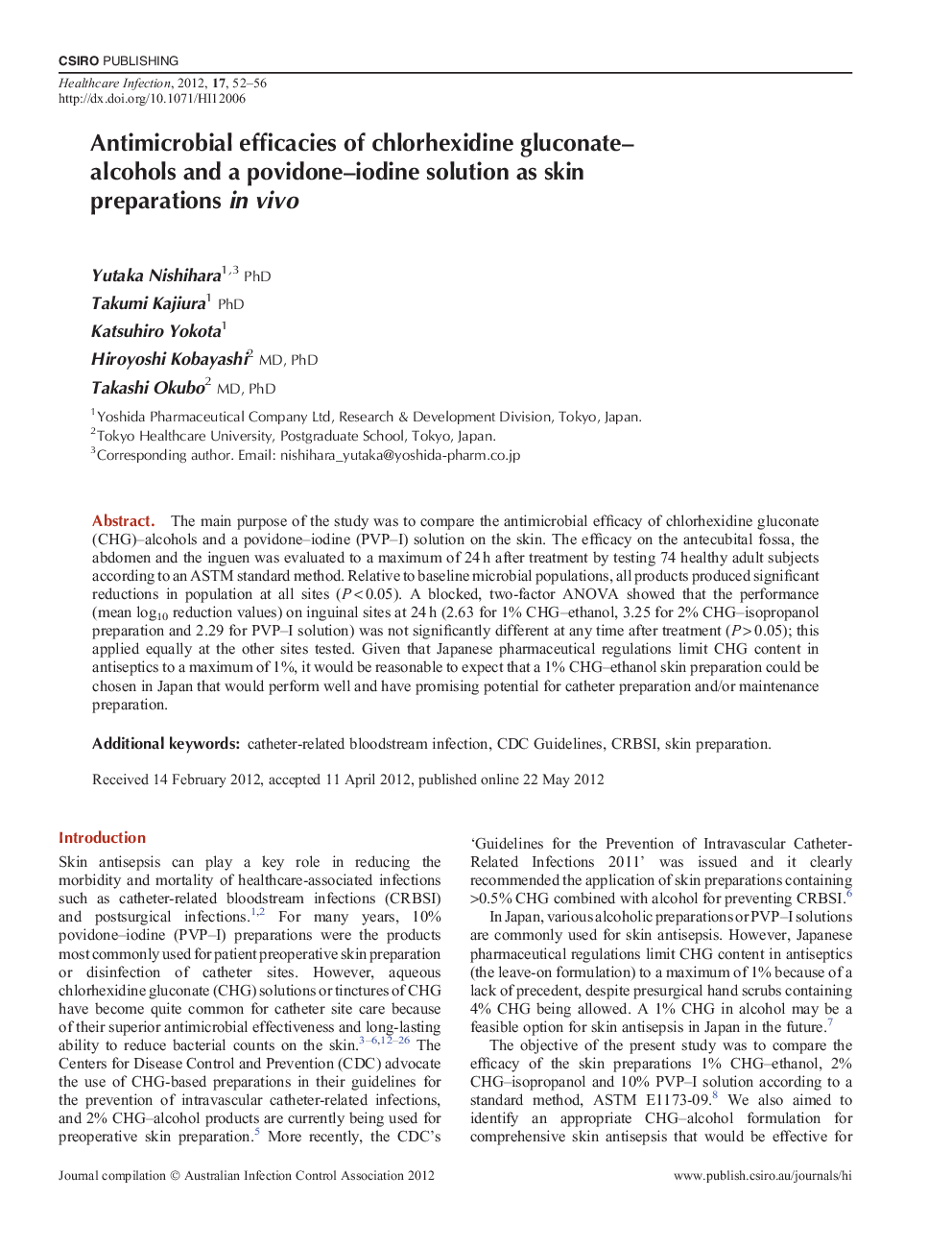| کد مقاله | کد نشریه | سال انتشار | مقاله انگلیسی | نسخه تمام متن |
|---|---|---|---|---|
| 2682843 | 1142590 | 2012 | 5 صفحه PDF | دانلود رایگان |

The main purpose of the study was to compare the antimicrobial efficacy of chlorhexidine gluconate (CHG)–alcohols and a povidone–iodine (PVP–I) solution on the skin. The efficacy on the antecubital fossa, the abdomen and the inguen was evaluated to a maximum of 24 h after treatment by testing 74 healthy adult subjects according to an ASTM standard method. Relative to baseline microbial populations, all products produced significant reductions in population at all sites (P < .05). A blocked, two-factor ANOVA showed that the performance (mean log10 reduction values) on inguinal sites at 24 h (2.63 for 1% CHG–ethanol, 3.25 for 2% CHG–isopropanol preparation and 2.29 for PVP–I solution) was not significantly different at any time after treatment (P > 0.05); this applied equally at the other sites tested. Given that Japanese pharmaceutical regulations limit CHG content in antiseptics to a maximum of 1%, it would be reasonable to expect that a 1% CHG–ethanol skin preparation could be chosen in Japan that would perform well and have promising potential for catheter preparation and/or maintenance preparation.
Journal: Healthcare infection - Volume 17, Issue 2, June 2012, Pages 52-56